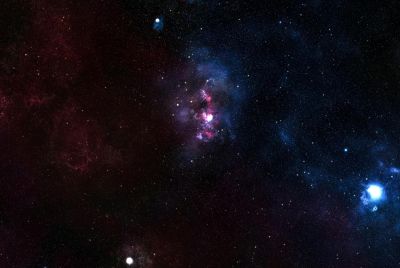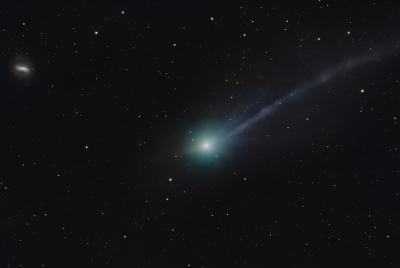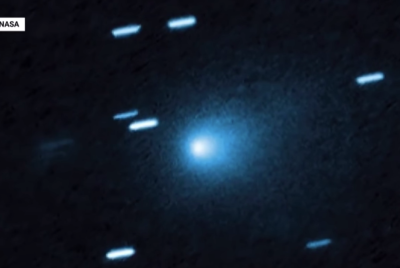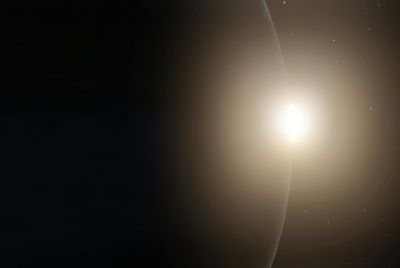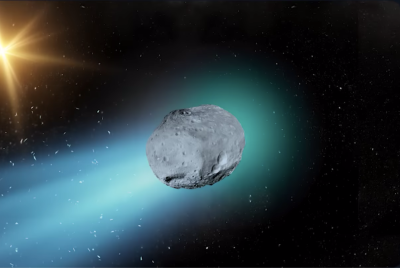Interstellar Comet 3I/ATLAS Stuns Astronomers as New Photos Reveal Giant Anti-Tail Jets Stretching Millions of Miles
Satoru Murata captures rare anti-tail jets as 3I/ATLAS speeds past Earth
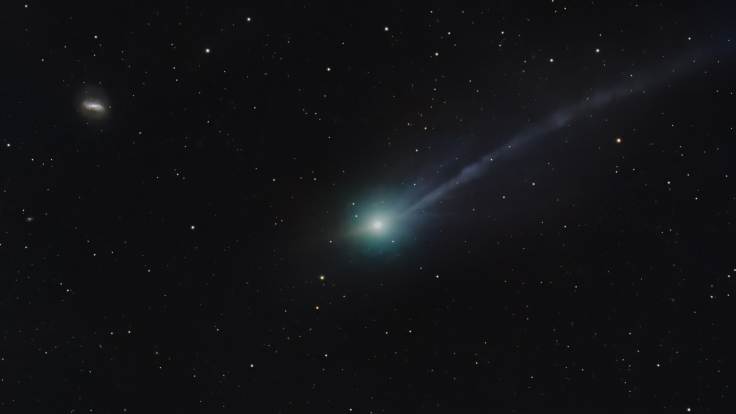
The interstellar comet 3I/ATLAS has stunned astronomers yet again after Japanese astrophotographer Satoru Murata captured extraordinary new images showing three distinct ionic jets and a dramatic sunward-pointing anti-tail, as the object swept past the galaxy NGC4691under a thin crescent Moon.
Murata's photographs, taken from New Mexico and posted on Facebook, have quickly circulated among scientists studying the comet's unusual behaviour.
His observations confirm that 3I/ATLAS is still following a hyperbolic trajectory, meaning it will leave the Solar System permanently. Yet the structures seen around it defy many long-held assumptions about cometary physics.
Murata's Photos Reveal Extraordinary Anti-Tail Jets
Speaking about his capture, Murata wrote: 'I captured the interstellar comet early this morning as a thin crescent moon passed immediately next to it. Still was able to capture three separate jets of ionic tail, and an anti tail? Or the dust tail? The comet was also passing by the galaxy NGC4691, which really gave the impression of the object being from another world.'
These features match previous observations showing two sunward-facing anti-tail jets stretching 0.95 million kilometres, while the main tail extends 2.85 million kilometres away from the Sun. At a distance of 326 million kilometres from Earth, the comet's visible structures dwarf prior Hubble images.
Outflow speeds of around 0.4 km/s indicate a slow but persistent release of material. Scientists estimate the anti-tail's density is one million times greater than the surrounding solar wind, giving a monthly mass loss of roughly 50 billion tonnes — comparable to the comet's own estimated minimum mass.
Why Capturing the Anti-Tail Is Nearly Impossible
Despite the spectacular images, experts say no spacecraft will be able to sample the anti-tail directly. Even at its closest approach on 19 December 2025, when 3I/ATLAS comes within 269 million kilometres, the jets remain far beyond reach.
NASA's Juno mission will pass 53 million kilometres from the comet in March 2026, while ESA's Juice probe sits about 64 million kilometres away. Neither will get close enough to intercept particles.
The sheer size, slow velocity, and extraordinary structure of the jets make 3I/ATLAS unlike any comet previously observed within our Solar System.

Scientists Divided Over the Anti-Tail Mystery
Researchers have proposed several explanations for the comet's unusual anti-tail: Some, including David Jewitt and colleagues, suggest the jets may contain giant dust particles about 100 micrometres wide — a million times heavier than typical comet dust. These particles resist solar radiation pressure, allowing them to form long, sunward-pointing structures.
Others, such as Harvard scientists Eric Keto and Avi Loeb, propose that ice fragments evaporate and redirect material sunward, creating the anti-tail.
More speculative theories include the possibility of directed jets behaving like thrusters, although no evidence currently supports technological origins.
What all scientists agree on is that 3I/ATLAS is challenging conventional comet science in a way not seen since the arrival of interstellar object 'Oumuamua in 2017.
A Rare Chance to Study an Interstellar Visitor
The multi-jet structure and anti-tail of 3I/ATLAS offer a unique opportunity for astronomers to observe how interstellar objects behave when entering the Solar System.
Because no probe can intercept it, space telescopes such as Hubble and James Webb will remain the primary tools for studying the comet until it disappears beyond the orbit of the outer planets.
The comet's behaviour could reshape theories about interstellar dust, comet formation, and hyperbolic trajectories. As it continues its one-way journey out of the Solar System, scientists intend to gather every scrap of data they can.
For now, 3I/ATLAS remains one of the most mysterious objects ever observed, and Murata's images have only deepened the intrigue surrounding this cosmic visitor from another star.
© Copyright IBTimes 2025. All rights reserved.







